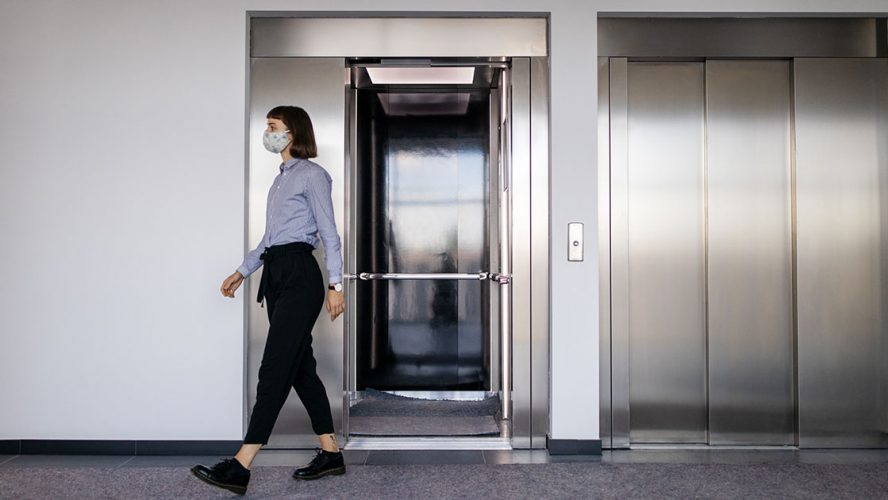Author, professional speaker, and health and safety consultant Shawn Galloway shares how environment, health, and safety (EHS) managers have become key advisers for businesses since the start of the COVID-19 pandemic.

Shawn Galloway
President of ProAct Safety, Author, Professional Speaker, and Health and Safety Consultant
What is the relationship between EHS management and returning safely to the office?
How companies perceive EHS management eventually evolves from grunt (administrative taskmaster) to guardian (overseer of programs) to guru (true subject matter expert, strategic advisor). At the beginning of the pandemic, regardless of how they were perceived or their true capabilities, EHS management became seen as the strategic adviser, helping to set policy, advising on how to safely shut down and eventually return to work. EHS management is responsible for advising on protocols, best practices, etc., but it is up to line leadership to carry them out. EHS management should be the adviser, not the implementer.
What will be the biggest changes EHS managers are going to have to make in response to the pandemic?
I have seen seven in my work as a trusted adviser to organizations:
- Safety strategy shakeup: Groups with established strategic priorities will need to review their plans against the new pandemic response and prevention tactics unexpectedly thrust upon safety professionals and teams or committees.
- Changed risk profile: With physical distancing requirements, many organizations have had to redesign how work is performed. Any time work is changed, the risk profile can change as well.
- Communication confusion: There are abundant examples of the mass confusion and frustration felt by anyone watching the news or press briefings since March with the changes in recommended precautions. Realize how quickly credibility is lost when the message is unclear or repeatedly changes.
- Narratives: Since the pandemic began, narratives have been quickly created and changed, and those narratives affected society’s behavior. Whoever has the loudest influential voice will shape the storytelling in a small group, culture, or society. It is stories that will perpetuate or change culture. As we have seen, without access to the right information or data, a narrative will be created that usually will not be the one you desire. If you want to change the narrative, you must change beliefs. To do so, change the information and experiences.
- Control vs. influence: The COVID-19 pandemic has presented an interesting and unfortunate case study on controlling and influencing human behavior, as some people willingly comply with government mandates while others openly resist even data-driven requests for behavioral change through influential methods. Within corporations, there will always exist behaviors that are required and must be controlled, as they help prevent serious injuries. Other behaviors can only be addressed through influence.
- Focus in safety: Many companies, while focusing on safety, lost their focus in safety. While the pandemic created tragic outcomes, we need to realize this was like other major distractions and disruptions to businesses. When this happens, people lose the ability to focus on the minutia and refocus more broadly in safety. Specificity is needed to know what the risks are, what precautions are necessary to address the unique risks, and how what we do now ensures the precautions are regularly taken. The tools used to solve 2019 problems will not work in 2020, and likely, for many, 2021 as well. Refocus.
- Keep the strategy seat: While many EHS professionals fought for their “seat at the table,” they were not viewed as strategic leaders: more as taskmasters or program administrators. With the need to meet the CDC’s recommendations for businesses and to remain viable and avoid bankruptcy, the EHS leader was thrust into collaborative discussions with operations on how to safely stay open or shut down, and then slowly return to normal operations. Strategy is about creating and delivering sustainable value. EHS leaders who took charge, thought strategically, and had their bets paid off, were seen as strategic contributors and advisers. There will be an increase in the recognition that EHS needs a company-specific strategy aligned with operations that is predictive, resilient, and agile. For this, the most important lasting change is the identified need for strategic-thinking EHS professionals. It is largely the responsibility of individual EHS managers to become this, not the companies that employ them.
How will having EHS software solutions in place help business owners during COVID-19 and beyond?
Preventing employees, contractors, and visitors from contracting the virus is not only an altruistic goal, but is also vital for business continuity. With that, there are, to me, obvious short- and long-term benefits. From proximity sensors and their data cloud, to better capturing data to drive immediate and long-term planning decisions. As the technology solutions we deploy improve, the better we can optimize and create more efficiency. I know of very few EHS managers that have abundant resources and people standing around waiting for a project to work on. With many companies focusing on Industry 4.0, Safety 4.0 should keep up. This is not possible without ever-evolving software solutions. Software, when leveraged correctly, improves efficiency, creates more synthesized intelligence, and enables progress that was previously unreachable.
What do you see for the future of EHS management and its role in office health and safety?
We have often taught that off-the-job safety topics should be an on-the-job conversation. Now for millions, the off-the-job home location has become their new on-the-job office location. EHS management will be helping to shape the decisions employees take in their offices, regardless of location.
Employees used to working in an office now work on their couch and experience new ergonomic-related pains as a result. Approaches to office workers need to be relevant and customized to their unique hazards and risks. This requires future EHS managers to be focused strategically. This has two parts. The things they focus on for office workers must be the right things, risk-based, and truly move the needle in safety performance and culture. The other is creating the perception of value. This is harder, but with the involvement of office workers in identification and problem solving, the task becomes so much easier.

